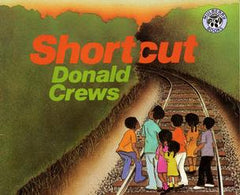Menu
-
- Home
-
About Us
-
The Approach
-
Linking Language & Literacy
-
MindWing Learning
-
Learning Resources
-
SHOP
-
Blog
-
- About MindWing
- Our People
- Contact Us
- Your Account
- Login
-
Spain (EUR €)

Kick-Off the Kick-Off
January 12, 2011

Is Maryellen Actually “Maryellen Who?”
December 16, 2010 1 Comment
 Theodor Seuss Geisel, better known to the world as Dr. Seuss, was born in 1904 on Howard Street in Springfield, Massachusetts – which is right around the corner from MindWing’s office. The Dr. Seuss National Memorial Sculpture Garden is located at the Springfield Museums near our office as well. The influence of Ted’s (Dr. Seuss’) memories of Springfield can be seen throughout his work.
Theodor Seuss Geisel, better known to the world as Dr. Seuss, was born in 1904 on Howard Street in Springfield, Massachusetts – which is right around the corner from MindWing’s office. The Dr. Seuss National Memorial Sculpture Garden is located at the Springfield Museums near our office as well. The influence of Ted’s (Dr. Seuss’) memories of Springfield can be seen throughout his work.
In keeping with the spirit of the holiday season, we wanted to share a lesson idea from MindWing’s book: East Meets West for the Holidays by Maryellen Rooney Moreau and Judy K. Montgomery. This lesson is based on one of Dr. Seuss’ most beloved holiday stories: How the Grinch Stole Christmas.

Gingerbread Characters and Settings
December 08, 2010

Using the holidays as a context for language interventions can be tough, as it’s important to be inclusive of all cultures and celebrations. From a technology perspective, there just aren’t many great interactive resources about the Festival of Lights (anyone want to make some)? Gingerbread, however, while associated loosely with Christmas, is probably fair game in the public school setting!
Now, while websites with excessive, distracting ads are often something I rule out as a potential therapy resource, sometimes sites that are actually a giant, yet somehow unobtrusive ad can be great...
Adult/Child Interaction
October 29, 2010
Maryellen is having a conversation with her granddaughter Lauren at the age of two. Notice how Maryellen used a cuddly toy cow to encourage Lauren to remember a visit to a farm. The two had experienced the event is real time. This interaction centers on the memory of the visit and is expressed as a personal narrative...
“Make It Better” through Storytelling
October 25, 2010
 It’s really exciting when a speech-language material is published that provides clinicians with a ready-to-go resource that jibes well with strategies we already have been teaching. Such is definitely the case with the excellent We Can Make it Better program recently released by Think Social Publishing and written by Speech-Language Pathologist Elizabeth Delsandro. We Can Make it Better is a set of 20+ stories in which social interactions go quite wrong due to “unexpected behaviors” by one of the characters. The materials and activities unfold in a very logical therapeutic structure that challenges students to “make it better” by deciding alternative actions for the characters...
It’s really exciting when a speech-language material is published that provides clinicians with a ready-to-go resource that jibes well with strategies we already have been teaching. Such is definitely the case with the excellent We Can Make it Better program recently released by Think Social Publishing and written by Speech-Language Pathologist Elizabeth Delsandro. We Can Make it Better is a set of 20+ stories in which social interactions go quite wrong due to “unexpected behaviors” by one of the characters. The materials and activities unfold in a very logical therapeutic structure that challenges students to “make it better” by deciding alternative actions for the characters...
Setting Can be the Key to a Story
September 27, 2010

My previous post discussed the narrative element of setting and the tendency of students on the autism spectrum (or with other language disorders) to leave out details about setting, causing listener confusion. One way to explore the importance of setting is to plan interventions using books with an integral setting- where the setting is key to the motivations of the characters and understanding of the plot.
One of my favorites in this vein is Donald Crews’ Shortcut, the story of a group of cousins who find themselves in unexpected danger after taking a shortcut home. Not only does the book serve as an excellent example of building suspense around a small moment in a personal narrative (great for students working on memoir), it also lends itself to being mapped both on a Setting Map and a literal, visual map to develop storytelling skills...
